The ancient landscapes of the American Southwest are filled with mysteries, and one of the most intriguing is the rock art left behind by the Ancestral Puebloans. Among these relics, the Wolfman Pictograph Panel in Comb Ridge, Utah, stands as a testament to the artistic and spiritual depth of this ancient culture. The panel, etched into the red sandstone of the region, offers a glimpse into a world long past, where rock surfaces became canvases for expressions of belief, ritual, and storytelling. This article delves into the significance of the Wolfman Pictograph, the environment of Comb Ridge, and the ongoing efforts to preserve this invaluable piece of history.
Geography and Environment of Comb Ridge
Comb Ridge, a striking monocline that stretches for 120 miles, defines the landscape of southeastern Utah. It’s an area where the earth seems to have been shaped by time itself, with towering cliffs, hidden canyons, and rock formations that capture the imagination. The ridge is part of the larger Bears Ears National Monument, a region rich in archaeological treasures and cultural significance. Its rugged beauty, however, masks the challenges of survival in such an arid environment.
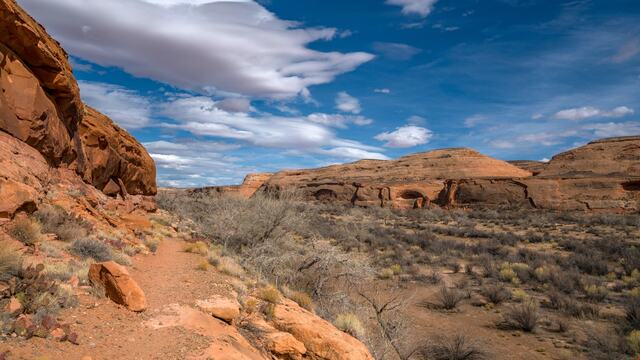
For the Ancestral Puebloans, this harsh desert landscape was more than just a backdrop; it was a life-sustaining environment. The canyons and cliffs provided shelter, while springs and seeps offered precious water sources. These early inhabitants left their mark on the land in the form of petroglyphs and pictographs, many of which remain scattered across the cliffs and canyon walls, including the famous Wolfman Pictograph. These ancient rock art sites serve as reminders of a culture deeply connected to the land and its spiritual forces.
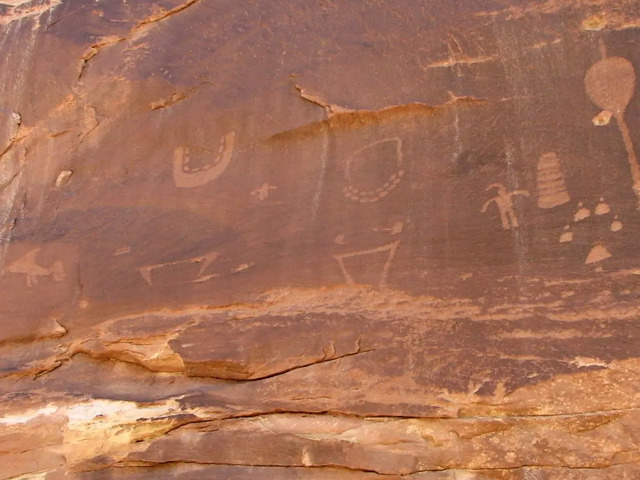
Video
Check out the video to explore Bears Ears National Monument, featuring the Wolfman Panel, ancient ruins, and the stunning Comb Ridge in Utah. It’s a breathtaking journey through history and nature!
The Archaeological Importance of the Wolfman Pictograph
The Wolfman Pictograph is not just a remarkable work of art; it holds immense archaeological value in understanding the spiritual and cultural practices of the Ancestral Puebloans. Rock art was an integral part of their society, used to convey stories, document significant events, and serve as a medium for spiritual expression. In the case of the Wolfman Panel, the humanoid figure at the center is particularly striking, with exaggerated features that include large hands, which may indicate its importance in ritualistic or ceremonial contexts.
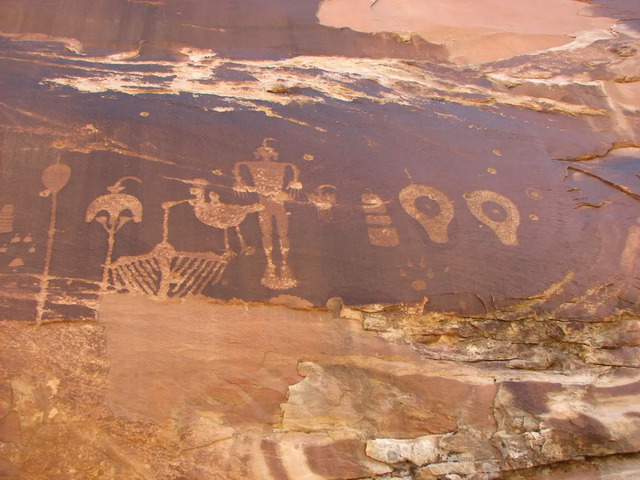
Archaeologists believe that the figure could represent a shaman or a spiritual being, someone who communicated with the spirit world. This is supported by the presence of other motifs around the figure, including a bird, a yucca plant, and a basket—symbols that may hold particular significance in the rituals of the time. The intricate details of the Wolfman Pictograph help to paint a picture of the Ancestral Puebloan worldview, where nature, the supernatural, and the human experience were deeply intertwined.
Key Features of the Wolfman Pictograph
The central figure of the Wolfman Pictograph is perhaps the most captivating element of the panel. This long-limbed, humanoid figure, with oversized hands, is set against a backdrop of other symbols that add depth and meaning to the scene. Surrounding the figure are representations of a crane or bird, a yucca plant, a basket, and a mask—each of these symbols can be interpreted in various ways, but they all seem to suggest a narrative or a ritualistic process.
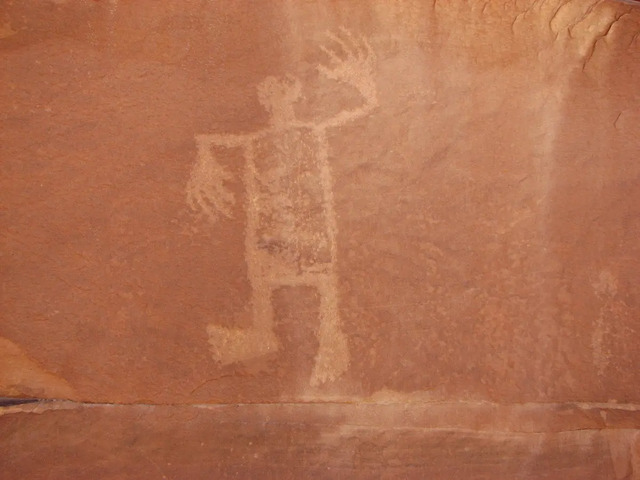
The large hands of the figure have led some researchers to speculate that the image depicts a shaman, a spiritual guide who may have been involved in healing, divination, or other ceremonial activities. The bird could represent a messenger between worlds, while the yucca plant and basket might symbolize sustenance or sacred offerings. The mask, often associated with transformation, could signify a shift between the physical and spiritual realms. These features are not merely decorative; they are part of a larger tradition of storytelling and religious practice that the Ancestral Puebloans used to make sense of the world around them.
The Discovery of the Wolfman Panel
While the Wolfman Pictograph has been known to locals for years, it wasn’t until the 1990s that archaeologists began to pay closer attention to the site. The panel, like many others in the region, had long been hidden in plain sight, waiting for the right set of eyes to recognize its importance. Once its significance was realized, researchers began to document and study the site in detail, uncovering new insights into the artistic techniques and spiritual practices of the Ancestral Puebloans.
The discovery of the Wolfman Panel is a testament to the persistence and curiosity of archaeologists, who, driven by a desire to understand the past, ventured into the rugged landscape of Comb Ridge. Their work has not only helped preserve this extraordinary piece of rock art but has also contributed to our understanding of the broader cultural context in which it was created.
Accessing the Wolfman Panel
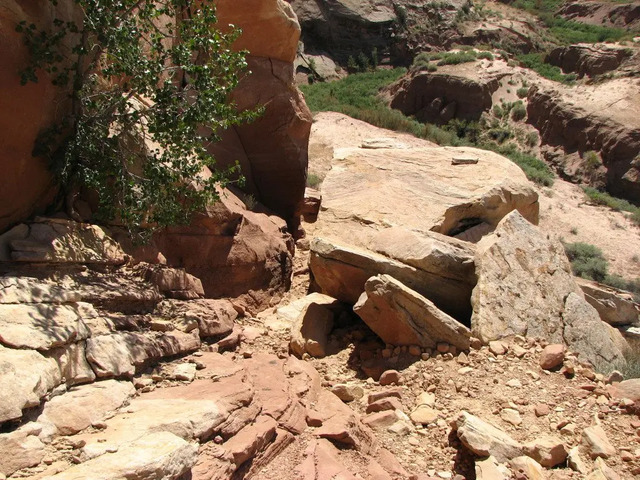
Visiting the Wolfman Pictograph is an adventure in itself, requiring visitors to traverse the rough terrain of Comb Ridge. The panel is located off Butler Wash Road, about four miles west of Bluff, Utah, and can be accessed via a dirt road. While the road is relatively well-maintained, navigating the final stretch to the panel can be challenging, especially for those unfamiliar with the area.
To reach the site, hikers must follow a faint four-wheel-drive track that leads to the cliff’s edge. From there, a cairn marks the descent to the canyon floor, where the Wolfman Pictograph is located. The journey to the panel offers a unique opportunity to experience the raw beauty of the landscape while also gaining insight into the challenges faced by the Ancestral Puebloans who once called this place home.
Preservation and Protection of Rock Art
Preserving the Wolfman Pictograph—and the many other rock art sites in the region—is a delicate task. The artwork is vulnerable to both natural and human-induced damage, including erosion, weathering, and vandalism. Unfortunately, the Wolfman Panel is not immune to such threats, as evidenced by bullet holes and other markings that have defaced parts of the artwork.
To ensure the preservation of these cultural treasures, visitors to the site are urged to follow the principles of responsible tourism. This includes refraining from touching the rock art, avoiding the use of chalk or paint on the petroglyphs, and respecting the sacredness of the site. By adhering to these guidelines, we can help protect the Wolfman Pictograph for future generations to appreciate and study.

Exploring Comb Ridge: Other Notable Petroglyphs
While the Wolfman Pictograph is perhaps the most famous of the petroglyphs in the region, it is by no means the only one. Comb Ridge is home to numerous other rock art panels, each with its own unique imagery and symbolism. Notable among these is the Procession Panel, which depicts 179 human-like figures marching in single file, as well as the Sand Island Petroglyphs, which offer additional insight into the lives of the Ancestral Puebloans.
Each of these petroglyphs provides a piece of the larger puzzle, helping archaeologists piece together the spiritual and cultural practices of the Ancestral Puebloans. Together, they form a rich tapestry of rock art that speaks to the depth and complexity of this ancient civilization.
The Cultural Legacy of Comb Ridge
The rock art of Comb Ridge, including the Wolfman Pictograph, stands as a powerful reminder of the cultural legacy of the Ancestral Puebloans. These images offer a glimpse into the lives of a people who lived in harmony with the land and whose spiritual practices were deeply intertwined with the natural world. The Wolfman Pictograph, in particular, continues to captivate and inspire those who visit, offering a window into a time long past.
As we continue to study and appreciate these ancient works of art, we are reminded of the importance of preserving our shared cultural heritage. The rock art of Comb Ridge is not just a relic of the past—it is a living testament to the creativity, spirituality, and resilience of the Ancestral Puebloans. By respecting and protecting these sacred sites, we ensure that future generations will be able to experience and learn from these remarkable expressions of human culture.
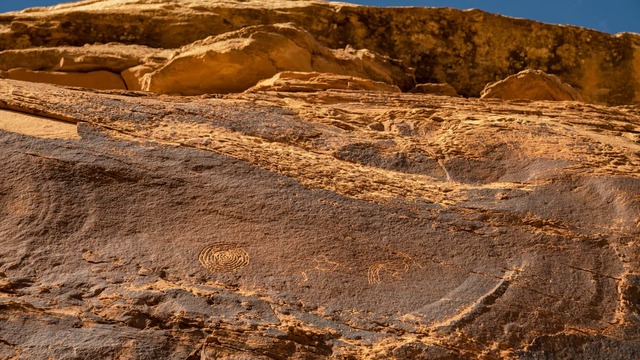
Video
Watch the video to uncover the mysterious pictographs of the Southwest. These ancient markings hold fascinating clues to the region’s history and culture!
Conclusion
The Wolfman Pictograph Panel is more than just a work of art; it is a key to understanding the spiritual and cultural world of the Ancestral Puebloans. Set against the rugged backdrop of Comb Ridge, this extraordinary piece of rock art continues to inspire awe and wonder. Through ongoing research and responsible stewardship, we can ensure that the Wolfman Pictograph, along with the many other petroglyphs of the region, remains a vital part of our shared cultural heritage. By appreciating and protecting these ancient artworks, we honor the legacy of a civilization that has long since passed but whose story continues to be told through the timeless medium of rock art.



